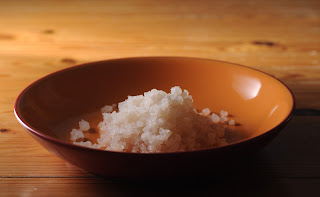If you've never been to the fermenting world, you probably have
not heard about water kefir. But if you’ve been following my kombucha brewing
journey and been making kombucha tea yourself, you may have come across the
topic water kefir, or I may have mentioned it to you once or twice. Water kefir
is another type of fermented drink. I’m very tempted to call it fermented
water, because that’s what really is. But most people raise their eyebrows when
they hear “fermented water” and confused face that’s like asking “why would you
ferment water?” Call me crazy, but I’m telling you, you should ferment water
and make water kefir. Anyway, so what is water kefir?
Water kefir, also called as tibi, tibicos, Japanese water
crystals and sugar kefir grains, is a type of fermented water cultured using
water kefir grains. These grains are like kombucha’s SCOBY but they have different
types of bacteria and different colonies of yeast. They are called grains,
because they are small crystals, unlike kombucha SCOBY that is a lump of
bacteria and yeast.
I have just started fermenting my own water kefir, but my
mom used to make it about 7-8 years ago. I can’t remember if I tried her water
kefir before, but she said she threw it away because couldn’t take care of it
anymore. Also, it was growing like crazy and she was afraid it might grow inside
her stomach. LOL.
So what’s in Water kefir?
Water kefir grains contain Lactobacillus, Streptococcus,Pediococcus and Leuconostoc bacteria
with yeasts from Saccharomyces, Candida, Kloeckera according to Wikipedia. These bacteria
and yeast are probiotics that are good for our gut health.
What does water kefir taste like?
Plain water kefir tastes like sugar water. When it ferments
longer, it starts to taste tangy, like kombucha but lighter. If you don’t like
the taste of Kombucha, you may like water kefir. You can also experiment with flavors
as you can do second fermentation.
 |
| Fermenting water kefir. Photo by: Little Eco Footprints |
What I love most about water kefir is the carbonation.
Unlike Kombucha in which carbonation is quite difficult to achieve, in water
kefir, you’ll have carbonation even if it’s only been a day since you fermented
it. So if you’re into soda-like carbonation, you’ll love water kefir too.
Have you tasted water kefir before? If so, please tell me
what you like about it in the comments below!














